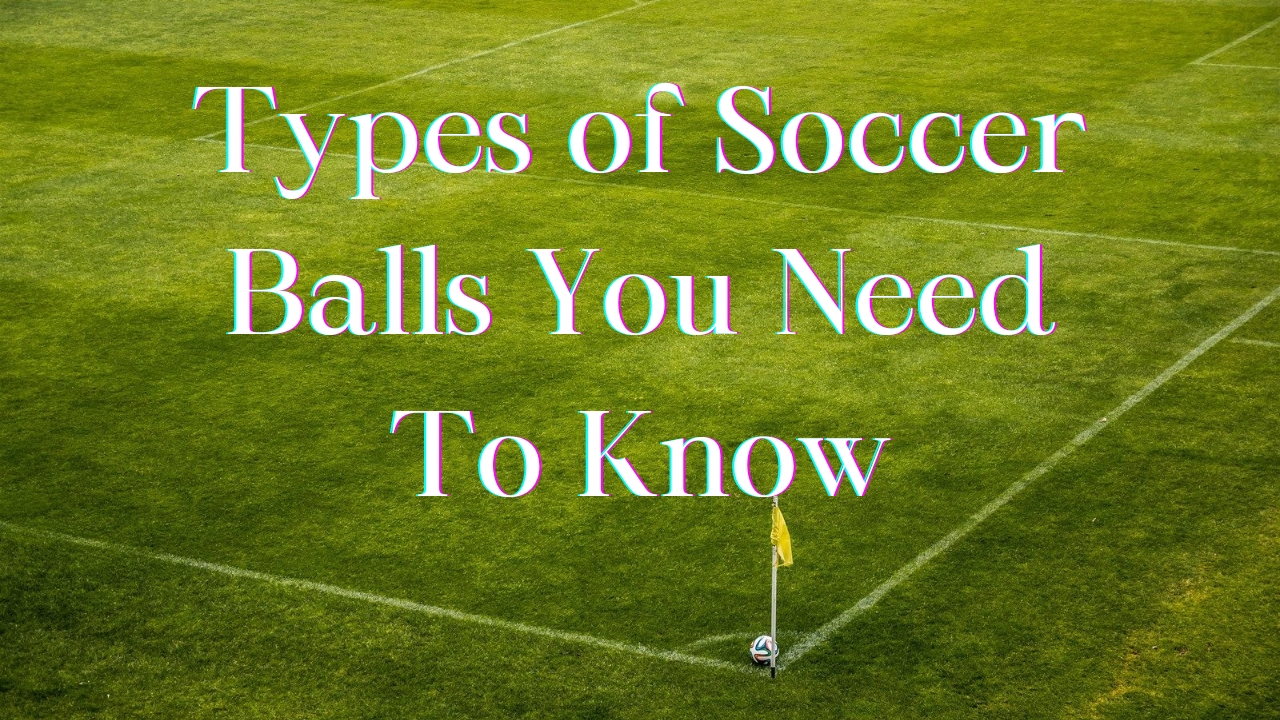Soccer, also known as football around the world, is the most popular sport globally. An essential piece of equipment for the game is the soccer ball. Over the years, different types of soccer balls have been developed for various playing conditions and levels. What are the different types of soccer balls used today?
Training Balls – Optimized for Practice Drills
Training balls are designed for practice and training drills. They are affordable and durable, able to withstand hours of kicking, heading, and throwing drills. Training balls come in a few varieties:
- Weighted balls: These have extra weight in them to help build player strength and kicking power. They make players kick harder.
- Balls that don’t bounce as high: These balls don’t bounce as high to improve ball control and trapping skills. Players have to react faster to make crisp passes.
- Size 4 balls: Youth players may use a size 4 ball which is slightly smaller and easier to control before moving to a full-size 5 ball.
Training balls allow for focused practice without wearing out more expensive match balls. Their key benefit is they last a long time during repetitive drills.
Match Balls – The Official Game Ball
Match balls are the official game balls sanctioned for competitive play. They have very specific characteristics and standards:
- Size 5 ball – The regulation size for adult players.
- Spherical shape – A rounded design supports accurate flight.
- Leather or synthetic leather casing – Provides durability and responsiveness.
- Balanced panel shape/design – Panels are carefully designed and stitched for optimized aerodynamics and shot accuracy.
There are a few types of match balls:
- FIFA approved – Meets stringent standards for use in international competitions like the World Cup.
- Professional league balls – Designed exclusively for leagues like the English Premier League or MLS.
- International match balls – High-quality balls used in competitive club matches and tournaments.
Some examples of famous match balls include the Adidas World Cup ball used in international tournaments and the Nike Ordem ball used in Premier League matches.
Match balls allow for peak performance during competitive games. Their standards ensure fair and accurate play at the highest levels.
Indoor Balls – Made for Futsal and Indoor Surfaces
Indoor balls are designed specifically for futsal, street soccer, and indoor arena surfaces. They have characteristics tailored for indoor play:
- Less bounce – They don’t bounce as high to allow better control in tight spaces.
- Padded covering – Cushioning absorbs impact for indoor hard surfaces.
- Smaller and lighter – Their compact size makes it easier to dribble and maneuver.
There are a few types of indoor balls:
- Futsal balls – The official ball for futsal matches, approved by FIFA.
- Turf balls – Durable synthetic surface allows use on artificial turf.
- Street soccer balls – Heavier padding for concrete street surfaces.
The benefits of indoor balls include:
- Controlled play – Reduced bounce aids close control and passing indoors.
- Cushioned impact – Padding reduces ball speed and stress on the body.
- Versatile grip – Textured covering suits different indoor surfaces.
Indoor balls optimize indoor soccer games by allowing responsiveness and protection appropriate for enclosed spaces.
Beach Balls – For Sand and Street Surfaces
Beach balls are designed specifically for beach soccer played on sand and street soccer played on asphalt surfaces. They have special characteristics to optimize play on these surfaces:
- Textured covering – Provides grip and control on loose sandy surfaces.
- Water resistant – Prevents water logging when playing in wet conditions.
- Durable stitching – Reinforced panels withstand abrasive street surfaces.
- Retains shape – Maintains spherical shape even when pounded on sand.
The key benefits of beach balls are:
- Maintain control – Textured grip allows ball control in loose sand.
- Withstand abrasion – Durable panels resist abrasive street surfaces.
- All-surface grip – Can be used on sand, concrete, turf, or grass.
- Weather resistance – Withstands rain and moisture during play.
Beach soccer balls allow optimized ball control and durability on unstable sandy fields and abrasive street surfaces. Their resilience suits the demanding conditions of beach and street soccer games.
Specialty Balls – Unique and Versatile
Specialty balls include unique soccer ball types like soccer tennis balls, luminous neon balls, and custom-designed balls. Some examples include:
- Soccer tennis balls – A small size 1 ball for solo practice drills.
- Glow in the dark balls – Have luminous coatings that glow for night games.
- Custom balls – Printed with team names/logos and colors.
- Reduced weight balls – Lighter for young players to develop skills.
- Inflatable pop-up balls – Easy to inflate and deflate.
The benefits of specialty balls include:
- Novelty – More fun options for practices and games.
- Visibility – Glowing balls can be used at night.
- Promotion – Custom designs for teams, clubs, and events.
- Skill building – Lightweight balls help beginners develop touch.
- Portability – Inflatable balls are easy to carry and store.
Specialty balls provide versatility, visibility, and fun for soccer players. They allow tailoring balls for specific settings, players, and purposes.
Conclusion
The game of soccer has evolved over many years and with it the development of different types of soccer balls for various settings.
Match balls allow for official competitive play at the highest level. Training balls optimize focused practice and skill development. Indoor balls suit futsal and street soccer with controlled bounce. Beach balls maintain grip and durability on sand and asphalt. Specialty balls add novelty, visibility, and custom options.
Related Post: The Complete Guide to Soccer Ball Materials
Author

